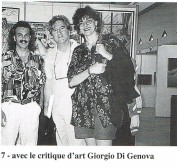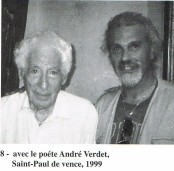
|
Man Ray). The authentic artist refuses to let himself be caged in by his initial vocation. André Breton demanded complete creative freedom for himself: the artist had the duty to choose the most suitable means to express himself with the same ease with which from his workbench the carpenter selects the instrument most suited to the job he wants to do. Thanks to the statuary dimension which the image acquires, the passing from the plane to he volume allows Hamlet to better evidence the illuminating and erotic cosmogonical aspect of the eternal feminine. Since time immemorial light has been associated with feminine principle and with Knowledge, be this of a metaphysical order (aurea apprehension, jnana gnosis, etc.) or of an intellectual one (mythology of intelligence, poetic inspiration, science and of wisdom). The mythologem which associates light the feminine principle is almost universally testified to and found at all cultural levels. This homologation draws its logic from the ligh knowledge identification. In fact, the woman is the depositary of the mysteries of sexuality and love. Sexual knowledge is paradigmatic knowledge, the first and most fundamental manifestation of awareness. To understand one's own nature is the key and the beginning of any other type of knowledge. The light-feminine principle correspondence, when,
|
completed by the third term, love reveals both the logic which determines the woman-wisdom association as well as the erotic, creative, magical and transformative dimension of the feminine. The transfiguring power of love, for example, is expressed in the mythical-ritual theme of the monster transformed into a marvellously beautiful being following coitus (or kiss, its symbol substitute). Four sculptures by Hamlet seem to ne illustrate the mythical-symbolic themes mentioned above in a particularly pertinent way. In La Gestante (The Pregnant Woman) of 1991 it is the cosmogonical and creative aspect of the feminine which is evoked. A woman who has reached the final stage of pregnancy holds two large eggs against her breasts. The position of the pregnant woman recalls the classical one of the Great Mother, the universal creator in prehistoric and ancient statuary. The association of the egg (archetypal symbol of the world's birth) to he breast (tied to the mythologem of the Great Mother, nourischer and protector) confirms this relationship and also the two aspects of the eternal feminine previously mentioned. The fact that this pregnant woman has the head of a rooster refers us back to both the androgyny of the divinity and to its illuminating activity. In fact, the rooster is universally accepted as a solar symbol and, consequently, of reflection, continue
|

